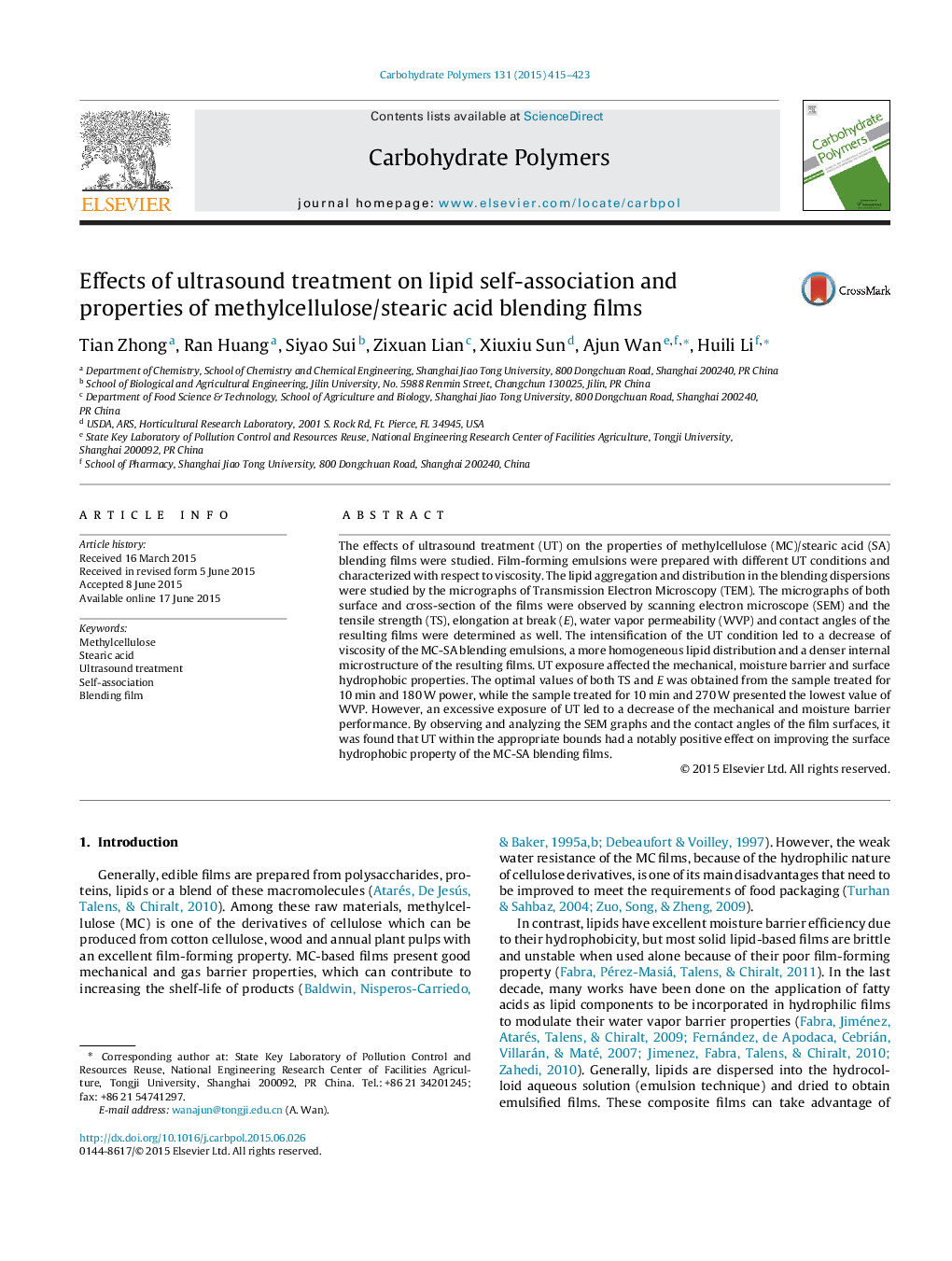| Article ID | Journal | Published Year | Pages | File Type |
|---|---|---|---|---|
| 7787847 | Carbohydrate Polymers | 2015 | 9 Pages |
Abstract
The effects of ultrasound treatment (UT) on the properties of methylcellulose (MC)/stearic acid (SA) blending films were studied. Film-forming emulsions were prepared with different UT conditions and characterized with respect to viscosity. The lipid aggregation and distribution in the blending dispersions were studied by the micrographs of Transmission Electron Microscopy (TEM). The micrographs of both surface and cross-section of the films were observed by scanning electron microscope (SEM) and the tensile strength (TS), elongation at break (E), water vapor permeability (WVP) and contact angles of the resulting films were determined as well. The intensification of the UT condition led to a decrease of viscosity of the MC-SA blending emulsions, a more homogeneous lipid distribution and a denser internal microstructure of the resulting films. UT exposure affected the mechanical, moisture barrier and surface hydrophobic properties. The optimal values of both TS and E was obtained from the sample treated for 10Â min and 180Â W power, while the sample treated for 10Â min and 270Â W presented the lowest value of WVP. However, an excessive exposure of UT led to a decrease of the mechanical and moisture barrier performance. By observing and analyzing the SEM graphs and the contact angles of the film surfaces, it was found that UT within the appropriate bounds had a notably positive effect on improving the surface hydrophobic property of the MC-SA blending films.
Related Topics
Physical Sciences and Engineering
Chemistry
Organic Chemistry
Authors
Tian Zhong, Ran Huang, Siyao Sui, Zixuan Lian, Xiuxiu Sun, Ajun Wan, Huili Li,
